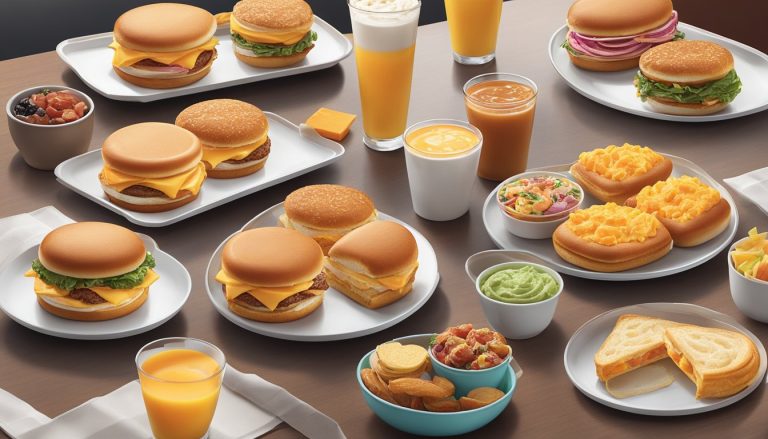Crafting the perfect Dunkin’ Doughnut is a blend of art and science, requiring precision, skill, and a deep understanding of ingredients. The iconic Dunkin’ doughnut stands out for its tender crumb, crispy exterior, and balanced sweetness that has captivated dessert lovers for generations. The secret to achieving this perfection lies in the careful selection of high-quality ingredients and the mastery of time-honored techniques.
Doughnut-making at Dunkin’ level involves more than just following a recipe. It demands attention to detail in every step, from preparing the dough to the final glaze. The process combines traditional methods with modern innovations to create a consistent product that meets the high standards Dunkin’ is known for. Each doughnut is crafted to achieve the ideal texture, flavor, and appearance that customers expect.
The perfect Dunkin’ doughnut is a testament to the brand’s commitment to quality and taste. By understanding the intricacies of dough handling, frying temperatures, and flavor combinations, bakers can recreate the beloved Dunkin’ experience at home. This journey into doughnut craftsmanship reveals the care and expertise behind every bite of these beloved treats.
History and Evolution of Doughnuts
Doughnuts have a rich history spanning centuries, evolving from simple fried dough to beloved treats available in countless flavors and styles. Their journey intersects with technological advancements and cultural shifts that shaped the modern doughnut industry.
The Origins of Doughnut
Fried dough treats similar to doughnuts have existed in various cultures for centuries. The Dutch olykoek, brought to America by settlers in the 19th century, is often considered a precursor to the modern doughnut.
In 1920, Russian immigrant Adolph Levitt invented the first automated doughnut machine. This innovation revolutionized production and was showcased at the 1934 World’s Fair in Chicago.
During World War I and II, doughnuts gained popularity as comfort food for soldiers. The American doughnut’s rise coincided with increased industrialization and changing food habits.
Evolution into Dunkin’ Donuts
In 1950, Bill Rosenberg founded the first Dunkin’ Donuts in Quincy, Massachusetts. This marked a significant milestone in doughnut history, as it helped popularize the alternative spelling “donut.”
Dunkin’ Donuts played a crucial role in transforming doughnuts from occasional treats to everyday snacks. Their iconic classic glazed donut became a staple offering.
The chain’s expansion throughout the latter half of the 20th century contributed to the widespread availability and standardization of donuts across America. Dunkin’ Donuts also introduced a variety of flavors and styles, catering to diverse consumer preferences.
Defining the Perfect Doughnut

The perfect doughnut balances classic elements with innovative twists, combining ideal texture with carefully selected ingredients. It appeals to both traditionalists and those seeking new flavor experiences.
Classic Vs. New Flavors
Classic doughnut flavors like glazed, chocolate, and jelly-filled remain popular for good reason. These timeless options evoke nostalgia and satisfy familiar cravings. Glazed doughnuts showcase the pastry’s soft texture and subtle sweetness. Chocolate varieties offer rich indulgence, while jelly-filled doughnuts provide a fruity surprise.
New flavor combinations push boundaries and excite taste buds. Maple bacon, matcha green tea, and lavender honey exemplify creative approaches. These innovative flavors attract adventurous eaters and keep doughnut shops relevant in a competitive market.
Striking a balance between classic and new flavors is key. Offering both traditional and unique options ensures broad appeal and keeps customers coming back to try the latest creations.
Texture and Consistency
Texture plays a crucial role in doughnut perfection. The ideal doughnut strikes a balance between a light, airy interior and a slightly crisp exterior. Cake-like doughnuts offer a denser, more substantial bite. Yeast-raised varieties provide a fluffy, pillowy texture.
Consistency is paramount. Each bite should maintain the same texture from start to finish. A well-crafted doughnut avoids being greasy or heavy. Instead, it feels satisfying without overwhelming the palate.
Freshness is essential for optimal texture. Doughnuts are best enjoyed soon after frying, when the contrast between crisp exterior and soft interior is most pronounced.
The Role of Ingredients
High-quality ingredients are the foundation of exceptional doughnuts. Flour forms the base, determining structure and texture. Fresh eggs add richness and help create a tender crumb. Milk contributes moisture and flavor.
Sugar sweetens the dough and aids in browning. Yeast or chemical leaveners like baking powder ensure proper rise. Fats, such as butter or oil, enhance flavor and texture.
Flavor additions like vanilla extract, spices, or citrus zest elevate the base recipe. For filled doughnuts, using real fruit preserves or high-quality custards makes a noticeable difference.
Ingredient ratios are crucial. Too much sugar can overpower, while insufficient fat may result in dry doughnuts. Precise measurements and careful mixing techniques ensure consistent results.
Ingredient Selection

Selecting the right ingredients is crucial for crafting authentic Dunkin’ Doughnuts at home. Quality components and precise measurements ensure optimal flavor, texture, and rise.
Flour Types and Their Impact
All-purpose flour is the standard choice for doughnuts, providing a balanced texture. For a chewier result, bread flour can be used. It has higher protein content, creating a denser structure.
Cake flour produces a more delicate crumb, ideal for cake doughnuts. A blend of all-purpose and cake flour can achieve a tender yet sturdy texture.
Key Ingredients for Flavor and Texture
Granulated sugar sweetens the dough and aids in browning. Yeast is essential for raised doughnuts, creating air pockets and a fluffy texture.
Milk adds richness and helps activate the yeast. Large eggs provide structure and moisture. Unsalted butter enhances flavor and tenderness.
Ground nutmeg is a signature Dunkin’ flavor. It adds warmth and depth to the dough. Salt balances sweetness and enhances overall taste.
Creative Additions and Toppings
Vanilla extract boosts flavor in both dough and glazes. Cinnamon can be added to the dough or used as a topping.
Chocolate chips or cocoa powder create chocolate variations. Fruit zest adds brightness to plain doughnuts.
Glazes can be flavored with extracts, fruit juices, or coffee. Sprinkles, chopped nuts, or shredded coconut provide texture and visual appeal.
Filled doughnuts can showcase jams, custards, or cream fillings. Savory options include cheese, herbs, or bacon bits for unique twists.
Doughnut-Making Techniques
Crafting the perfect Dunkin’ Doughnut requires mastering key techniques. These methods ensure a consistently delicious product with the ideal texture and flavor that customers expect.
Mixing the Dough
The foundation of a great doughnut lies in its dough. Start by combining flour, sugar, and yeast in a large mixing bowl. Gradually add milk and melted butter, mixing until a soft, sticky dough forms.
Knead the dough for 5-7 minutes until it becomes smooth and elastic. This develops the gluten, giving the doughnut its signature chewy texture.
Let the dough rest for 10-15 minutes before shaping. This allows the gluten to relax, making the dough easier to work with.
Shaping and Cutting
Roll out the dough on a lightly floured surface to about 1/2 inch thickness. Use a doughnut cutter to create the classic ring shape. A 3-inch cutter for the outer circle and a 1-inch cutter for the hole work well.
For filled doughnuts, use only the larger cutter. Place cut doughnuts on a floured baking sheet. Let them rise in a warm, draft-free area for 30-45 minutes until they double in size.
Frying to Perfection
Heat oil in a deep fryer or heavy-bottomed pot to 350°F (175°C). Carefully lower doughnuts into the hot oil, frying 2-3 at a time to maintain oil temperature.
Fry for 1-2 minutes per side until golden brown. Use a slotted spoon to remove doughnuts from oil. Place on a wire rack to cool and drain excess oil.
Allow doughnuts to cool slightly before glazing or filling. This prevents the toppings from melting off and ensures the best flavor and texture.
Essential Tools and Equipment

Crafting perfect Dunkin’ Doughnuts requires specialized equipment and tools. The right gear ensures consistency, efficiency, and quality in every batch of doughnuts produced.
Choosing the Right Deep Fryer
A commercial-grade deep fryer is crucial for achieving the signature Dunkin’ Doughnut texture. Look for fryers with precise temperature controls, typically ranging from 350°F to 375°F. Capacity is key – aim for at least 15-20 liters to handle high-volume production.
Stainless steel construction offers durability and easy cleaning. Consider models with built-in filtration systems to extend oil life. Digital displays and programmable settings can help maintain consistency across batches.
For safety, choose fryers with automatic shut-off features and well-insulated exteriors. Some models offer dual baskets, allowing simultaneous frying of different doughnut varieties.
Other Must-Have Tools for Doughnut-Making
A doughnut cutter is essential for shaping uniform rings. Opt for stainless steel cutters with sharp edges and comfortable handles. Sizes typically range from 2.5 to 3.5 inches in diameter.
Proofing cabinets help dough rise consistently. Look for units with humidity controls and adjustable shelving.
Glazing tables streamline the finishing process. Choose models with built-in heating elements to keep glazes at optimal consistency.
Other vital tools include:
- Mixing bowls (various sizes)
- Dough scrapers
- Rolling pins
- Cooling racks
- Thermometers (for oil and dough)
- Piping bags and tips (for filling)
Investing in high-quality equipment ensures efficient production and consistent results in your doughnut-making endeavors.
The Art of Glazing and Decorating
Glazing and decorating are crucial steps in creating irresistible Dunkin’ Doughnuts. These processes add flavor, texture, and visual appeal to the fried dough.
Crafting the Perfect Glaze
The classic glazed doughnut is a Dunkin’ staple. To achieve the ideal glaze, a mixture of powdered sugar, milk, and vanilla is heated to the right consistency. The glaze should be thin enough to coat evenly but thick enough to set properly.
Doughnuts are dipped while still warm, allowing the glaze to adhere smoothly. As it cools, the glaze hardens into a sweet, shiny layer. For chocolate frosted doughnuts, cocoa powder is added to the base glaze recipe.
Maple bacon doughnuts require a specialized approach. Real maple syrup is incorporated into the glaze for authentic flavor. The glaze is applied in a thicker layer to complement the savory bacon topping.
A Guide to Decorative Techniques
Decorating Dunkin’ Doughnuts goes beyond basic glazing. Sprinkles, chopped nuts, and coconut flakes add texture and visual interest. These toppings are applied while the glaze is still wet to ensure they stick.
For filled doughnuts, a piping bag is used to inject custard or jelly. The filling process requires precision to avoid overfilling or creating air pockets.
Drizzles and designs can be added using contrasting glazes. A steady hand and proper consistency are key for creating clean lines and patterns.
Seasonal designs often incorporate colored glazes and themed toppings. This allows Dunkin’ to offer festive options throughout the year, keeping the menu fresh and exciting for customers.
Mastering the Cooking Process

The cooking process is crucial for achieving the perfect Dunkin’ Doughnut texture and flavor. Proper oil temperature and cooking techniques are essential for crafting delicious doughnuts.
Optimizing Oil Temperature
The ideal frying temperature for Dunkin’ Doughnuts ranges from 350°F to 375°F. Using a reliable thermometer ensures accurate temperature control. Too low temperatures result in greasy, undercooked doughnuts. Excessively high temperatures cause burnt exteriors and raw interiors.
Maintaining consistent oil temperature is key. Add doughnuts in small batches to prevent drastic temperature drops. Allow the oil to reheat between batches for consistent results.
Quality oil choices include vegetable, canola, or peanut oil. These oils have high smoke points and neutral flavors, complementing the doughnut’s taste.
Cooking Time and Techniques
Proper cooking time varies based on doughnut size and oil temperature. Most doughnuts require 1-2 minutes per side. Look for a golden-brown color as an indicator of doneness.
Use metal tongs or a spider skimmer to gently flip doughnuts. Avoid splashing hot oil. Cook doughnuts in a single layer, preventing overcrowding and uneven cooking.
After frying, place doughnuts on a wire rack or paper towels. This allows excess oil to drain, resulting in a crisp exterior. Let doughnuts cool slightly before glazing or coating for best results.
Experiment with different cooking times to achieve desired texture. Shorter frying times produce softer doughnuts, while longer times create crispier exteriors.
Troubleshooting Common Issues

Crafting the perfect Dunkin’ Doughnut requires attention to detail and troubleshooting skills. Here are some common issues and solutions:
Flat doughnuts: Ensure the dough has properly risen before frying. Let it rest in a warm place until doubled in size.
Undercooked centers: Adjust oil temperature to 350-375°F (175-190°C). Fry for 60-90 seconds per side.
Oily doughnuts: Allow excess oil to drain on a wire rack after frying. Use paper towels to blot gently.
Tough texture: Avoid overmixing the dough. Mix just until ingredients are combined.
Inconsistent shape: Use a doughnut cutter for uniform sizes. Let cut dough rest briefly before frying.
Pale color: Add more sugar to the dough for improved browning. Fry until golden brown on both sides.
Cracked glaze: Let doughnuts cool slightly before glazing. Ensure glaze is the right consistency – not too thick or thin.
Stale taste: Store in an airtight container at room temperature for up to 2 days. Freeze for longer storage.
By addressing these common issues, bakers can consistently produce high-quality Dunkin’ Doughnuts. Practice and patience are key to mastering the art of doughnut-making.
From Home Kitchen to Baking Game

Transforming your home kitchen into a doughnut-making powerhouse requires dedication and skill development. With the right techniques and practice, anyone can elevate their baking game to create Dunkin’-worthy doughnuts.
Upgrading Your Home Baking Skills
Start by investing in quality tools and ingredients. A reliable stand mixer, digital scale, and thermometer are essential for consistent results. Practice proper measuring techniques, using weight for dry ingredients and volume for liquids. Master the art of yeast dough by maintaining ideal temperatures and proofing times.
Experiment with different frying methods and oil temperatures to achieve the perfect golden-brown exterior. Try baked versions for a healthier twist. Learn to create various glazes and toppings to add flavor and visual appeal.
The Path to Becoming a Donut Master
Consistency is key in donut-making excellence. Keep detailed notes on each batch, documenting ingredients, temperatures, and times. Analyze successes and failures to refine your technique.
Expand your repertoire by trying new flavors and fillings. Practice piping techniques for cream-filled varieties. Learn to balance sweetness and texture in your recipes.
Seek feedback from friends and family. Consider taking a baking course or watching online tutorials for advanced techniques. With persistence and passion, you can develop the skills to craft doughnuts that rival or surpass those from your favorite shops.
Continually Innovating Flavors and Designs

Dunkin’ Donuts consistently pushes the boundaries of flavor and design to excite customers’ taste buds and keep them coming back for more. The company blends creativity with careful research to craft unique offerings that appeal to a wide range of palates.
Developing Unique Recipes
Dunkin’ employs a team of expert food scientists and bakers to create new and exciting donut varieties. These professionals experiment with different ingredients, textures, and flavor combinations to develop standout recipes. They draw inspiration from global culinary trends, seasonal flavors, and customer feedback.
Some notable innovations include:
- Maple Bacon: A savory-sweet combo featuring maple frosting and real bacon bits
- Cosmic Coolatta: A colorful, galaxy-inspired donut with blue raspberry filling
- Peeps Donut: A springtime favorite topped with pink marshmallow Peeps
The development process involves rigorous testing and tasting to ensure each new flavor meets Dunkin’s high standards for quality and taste.
Balancing Traditional and Modern Tastes
While innovation drives Dunkin’ forward, the company also respects its classic offerings. The challenge lies in striking a balance between introducing new flavors and maintaining beloved staples. Dunkin’ achieves this by:
- Offering limited-time flavors alongside traditional options
- Updating classic recipes with modern twists
- Conducting market research to gauge customer preferences
For example, the company might introduce a matcha-glazed donut to appeal to health-conscious consumers while keeping their iconic Boston Kreme on the menu. This approach allows Dunkin’ to cater to diverse tastes and age groups, ensuring something for everyone.
By carefully balancing innovation and tradition, Dunkin’ maintains its position as a leader in the donut industry, continually surprising and delighting customers with its evolving menu.
Celebrating Doughnut Culture
Doughnuts have become a beloved culinary icon, inspiring dedicated celebrations and a vibrant food culture. Their widespread popularity has led to the creation of National Donut Day and cemented their status as a cherished treat.
National Donut Day and Its Significance
National Donut Day occurs annually on the first Friday of June. It originated in 1938 as a fundraiser for Chicago’s Salvation Army to honor the “Doughnut Lassies” who served these treats to soldiers during World War I.
Many doughnut shops, including Dunkin’ Donuts, offer promotions on this day. Customers often receive free doughnuts with purchases, driving increased foot traffic and sales.
The day has evolved into a celebration of doughnut culture, with bakeries creating special flavors and designs. Social media buzzes with doughnut-related posts, recipes, and images.
Doughnuts as a Culinary Icon
Doughnuts have transcended their humble origins to become a culinary icon. Their versatility allows for endless flavor combinations and creative presentations.
Glazed doughnuts remain a classic favorite, with their simple sweetness appealing to a wide range of palates. Dunkin’ Donuts’ glazed offerings are particularly popular.
Artisanal doughnut shops have emerged, elevating the treat with gourmet ingredients and innovative flavor profiles. These shops often feature rotating menus and seasonal specialties.
Doughnuts have inspired spin-off treats like doughnut-flavored ice creams, cereals, and even savory dishes. Their influence extends beyond food, appearing in fashion, art, and pop culture.




